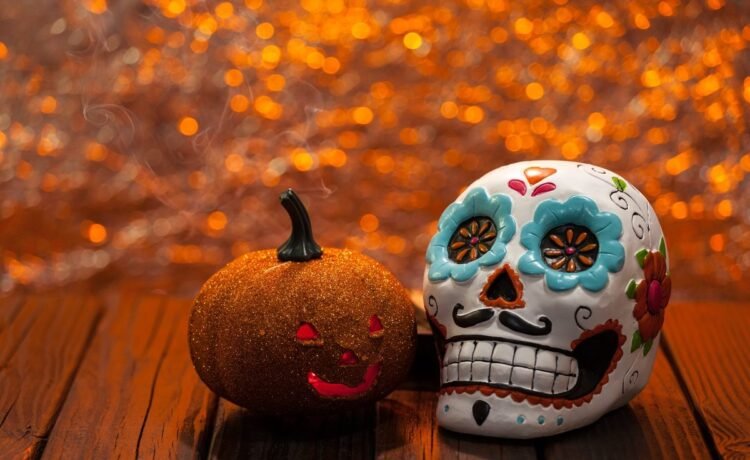Mexico is skillful at assimilating foreign things without surrendering its own traditions and identity. This blending of the unusual amidst the familiar helps to underpin Mexico’s attractiveness as a place to visit, and live.
Mexico is adept at blending cultures
One example of this blending of cultures is Mexico’s adoption of the Halloween custom of trick-or-treating into its Day of the Dead traditions. On the night of November 1st children in cities, towns and villages across Mexico dress up and roam the local neighborhood asking for candy while porting their hollowed-out and glowing pumpkins.
Instead of the ‘trick-or-treat’ mantra, the children arrive at each house and sing a little ditty which asks for their calaverita —little pumpkin— to be fed. Traditionally, children’s calaveritas are made using a chilacayote instead of an orange plastic replica, but the latter are also sold at local shops this time of year.
Mi Calaverita song
There are several verses to the ditty the children sing and, like Mexico’s birthday song, the first verse is always sung and subsequent verses (in their original form or a variation) may follow-on afterwards…
Lyrics to Mi Calaverita song in Mexico
Mi Calavera tiene hambre, ¿no hay un huesito por ahí? No se lo coman todo, déjenos las mitad.La calavera quiere cenar; cinco de dulce, cinco de sal
La calavera tiene hambre, denle un pedazo de pan; no se lo acaben todo, déjenos la mitad
Taco con chile, taco con sal; la calavera quiere cenar
El muerto pide camote, si no le dan se le cae el bigote; la viuda pide una ayuda para su pobre criatura
Yo quiero mi calavera, antes de que me muera; no quiero la del difunto, yo quiero la de la ofrenda
Mi calaverita tiene hambre—mucha hambre, ¿tiene algo por ahí?
Qué bonita casa, que bonito hogar; queremos calavera, ojalá nos puedan dar.
Traditional treats for the children
Although confectionery is the most commonly-given treat, some homes prepare traditional foods or snacks to share with passers-by, which might include pieces of fresh fruit, small tamales, and other sweet or savory snacks.
Afterwards, when the children begin to walk away with their calaveritas (or themselves) duly fed, a final line of the calaverita song may be sung:
Ya se va la calavera; bien agradecida; porque en esta casa fue bien recibida.
If you’re visiting Mexico’s during the Day of the Dead, you might see children dressed-up in costume and walking around local homes and shops during the hours immediately after sunset on November 1.
If you live in Mexico, it’s wise to stock-up with some candy or treats to give children on the night of November 1st, especially if your home is situated in a local neighborhood where young families live. November 2nd is a public holiday in Mexico.
Learn more about Day of the Dead in Mexico
We publish guides and articles to help you discover more about Day of the Dead in Mexico, as well as Pátzcuro and Oaxaca City.
Mexico in your inbox
Our free newsletter about Mexico brings you a monthly round-up of recently published stories and opportunities, as well as gems from our archives.
You Might Also Like
Getting the Scoop on Mexican Ice Cream Choices
It sometimes seems that every time you look around there’s a new ice cream parlor or store offering the latest...
Proof of Address when Filing Mexico Residency Procedures
Under the current immigration rules, there is no stipulated minimum time you must be physically present in Mexico each year...
Choosing a Place to Live in Mexico: Popular Locations
Place is personal, subjective, and important—and as you consider places to live in Mexico, Mexperience helps you to consider your...
The Pumpkin Soap and Shoe Wax Ritual
Shoe shine stands (“boleadores“) are one of the most traditional forms of street vending furniture that can still be found...










